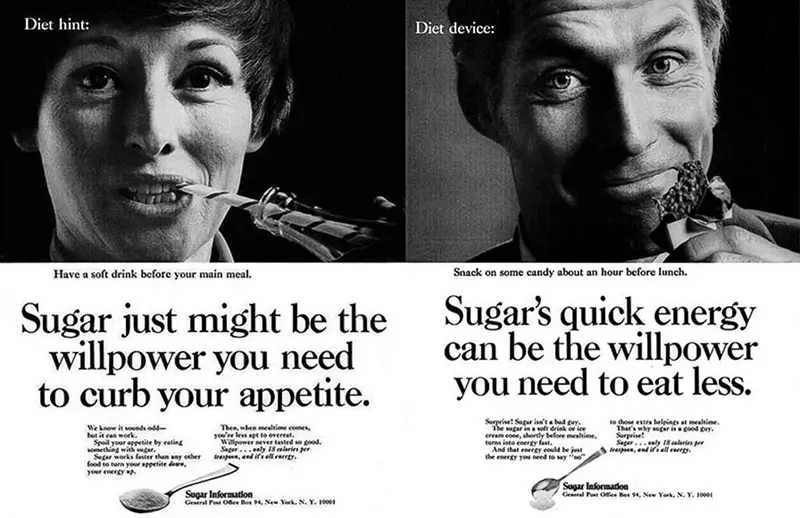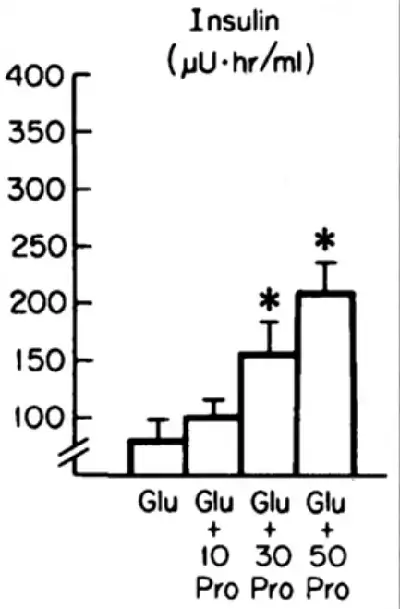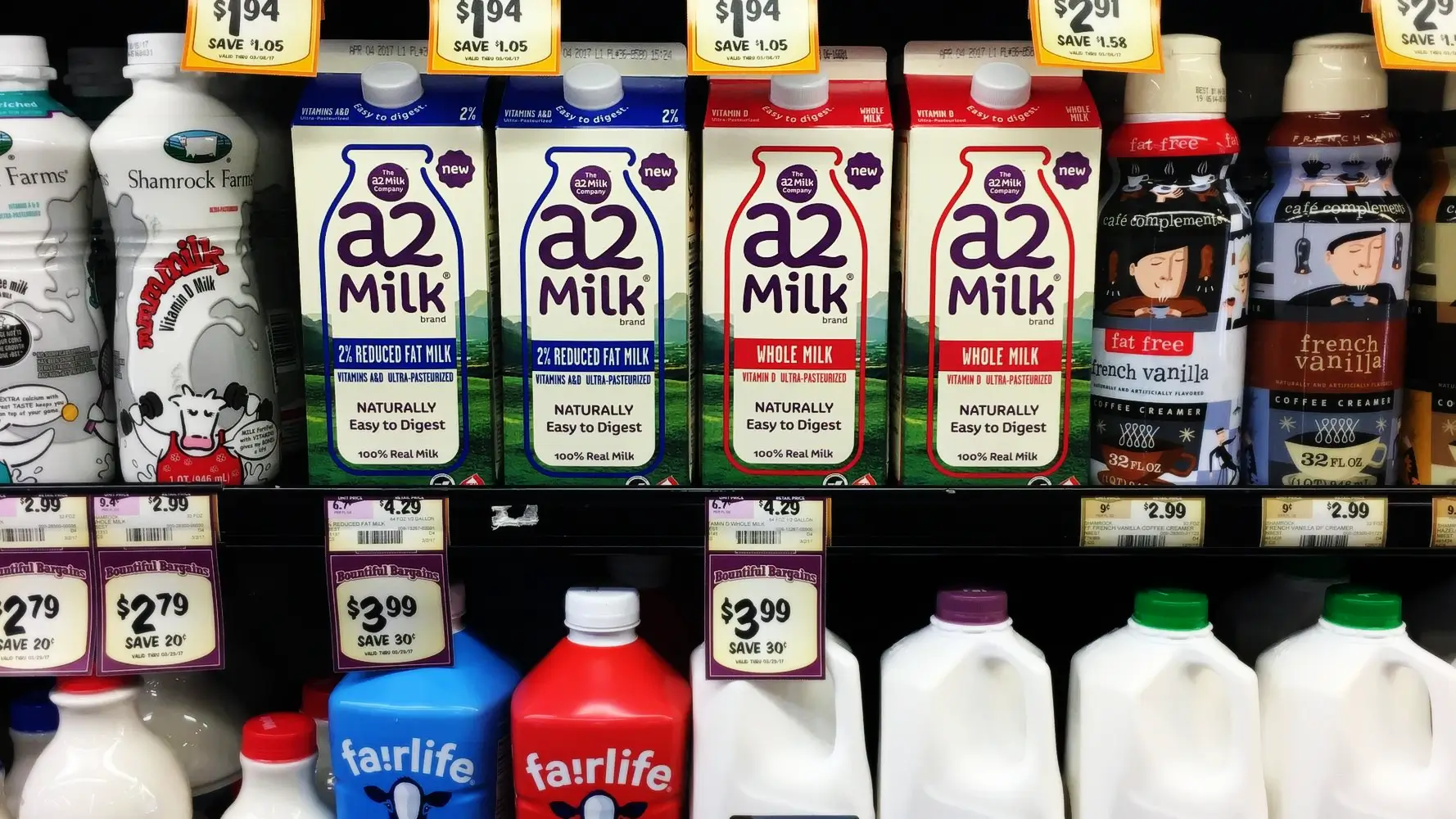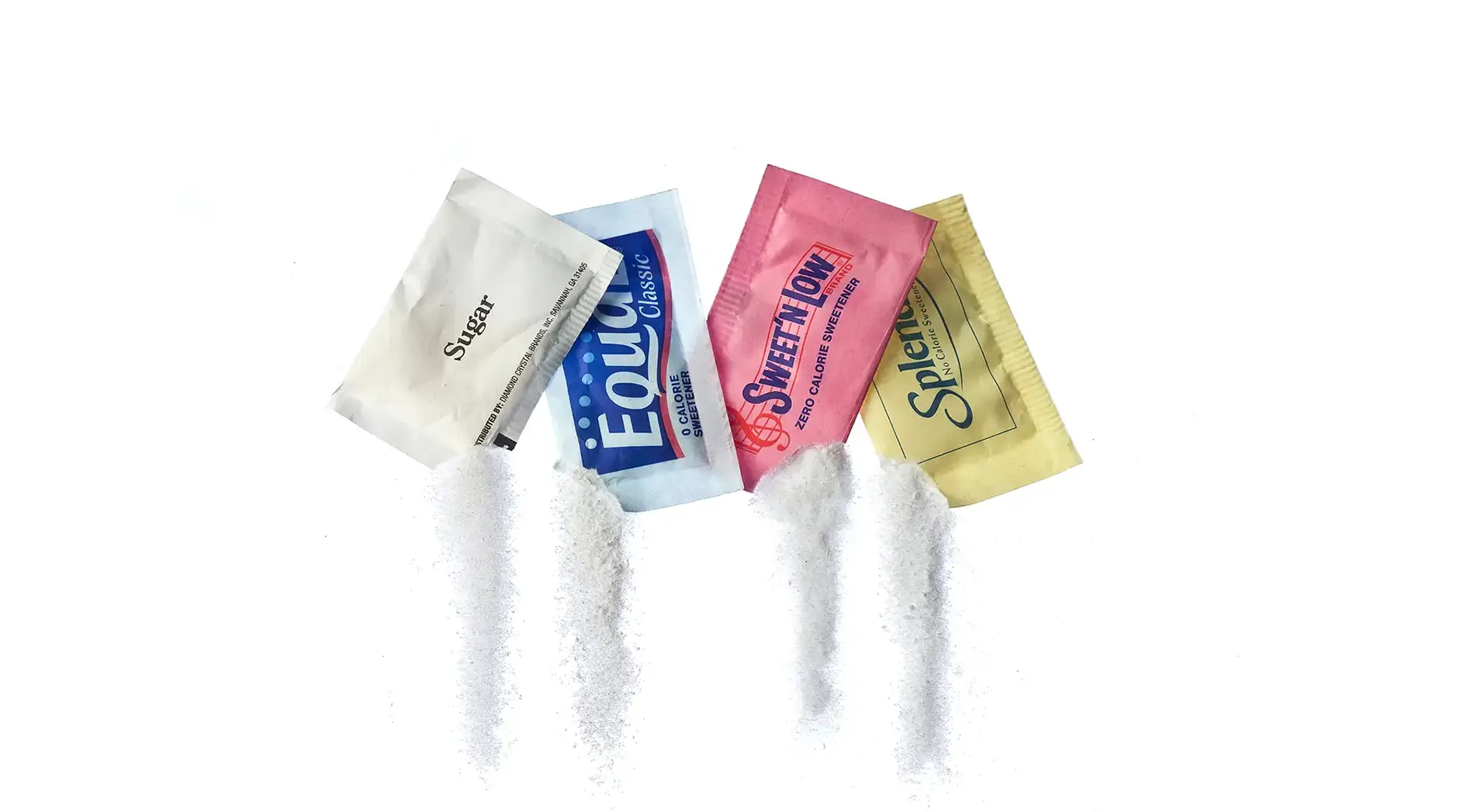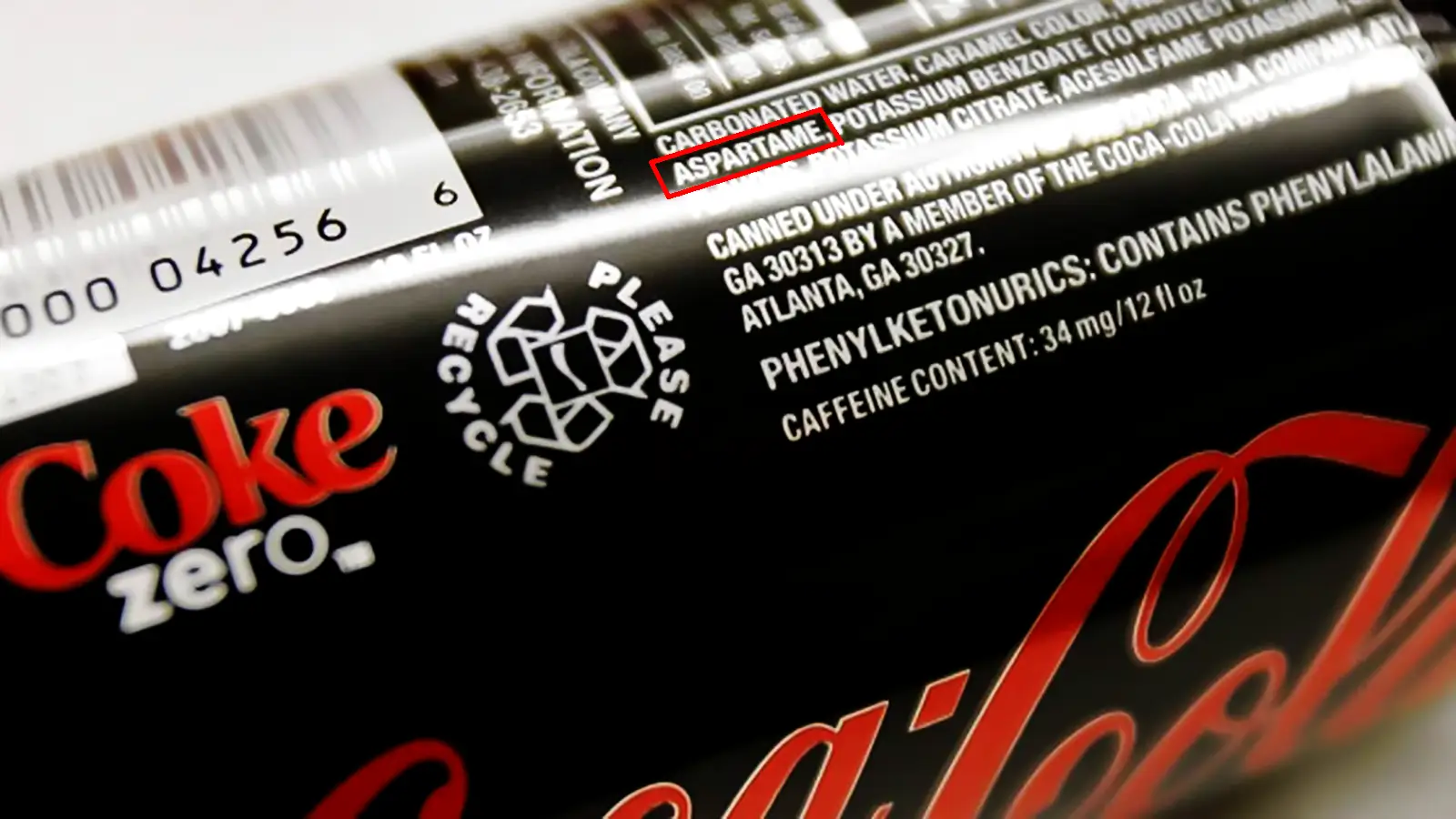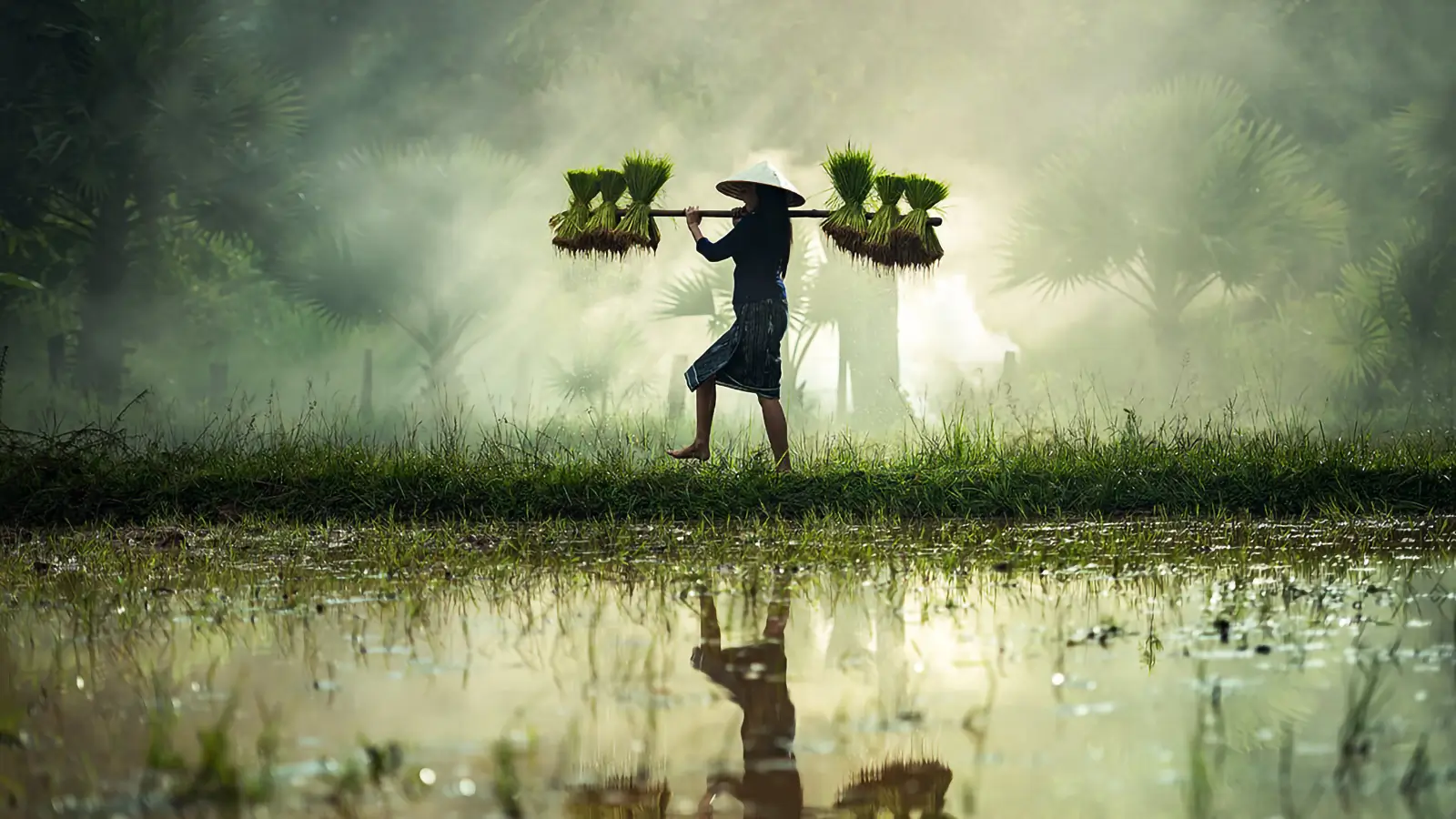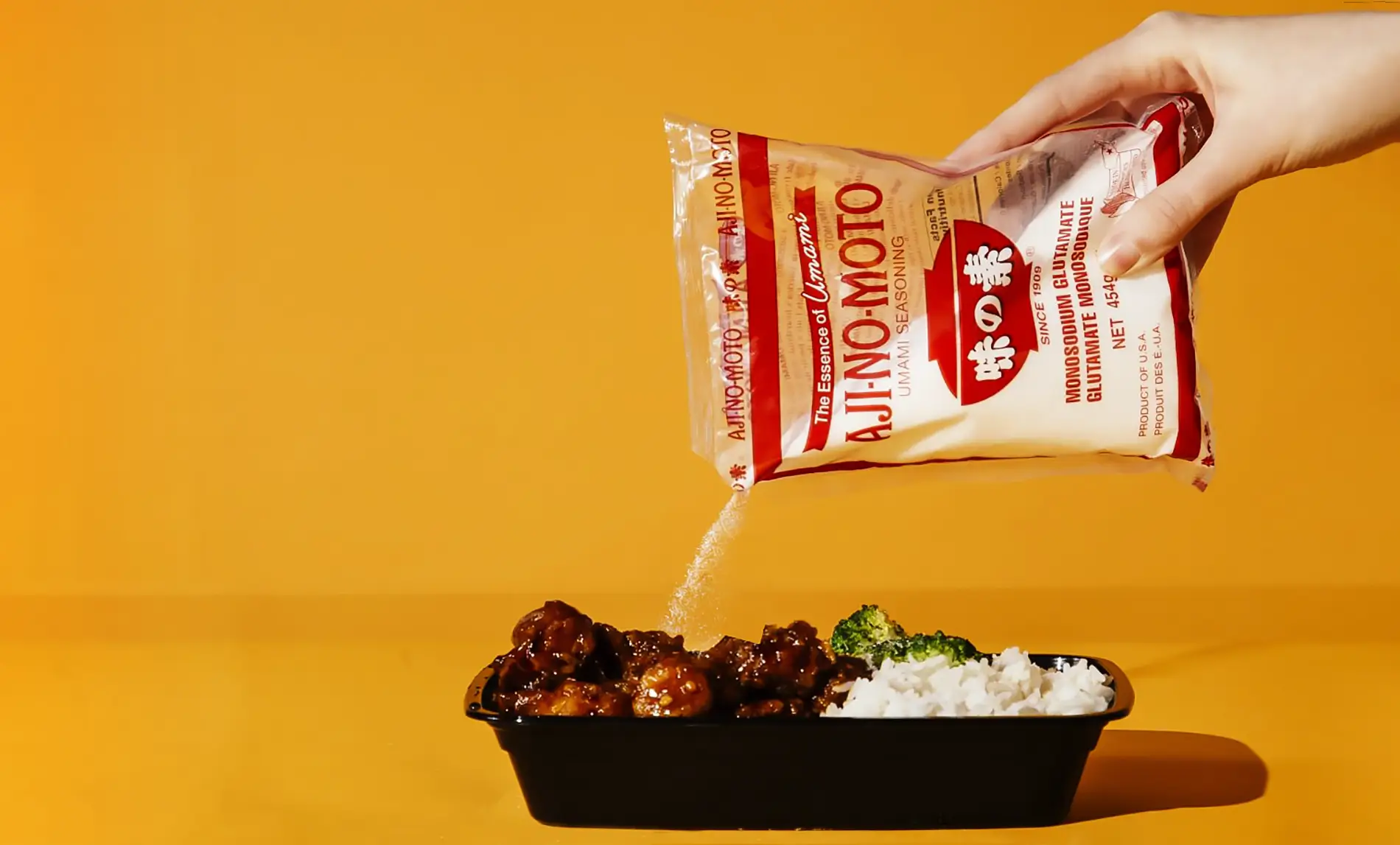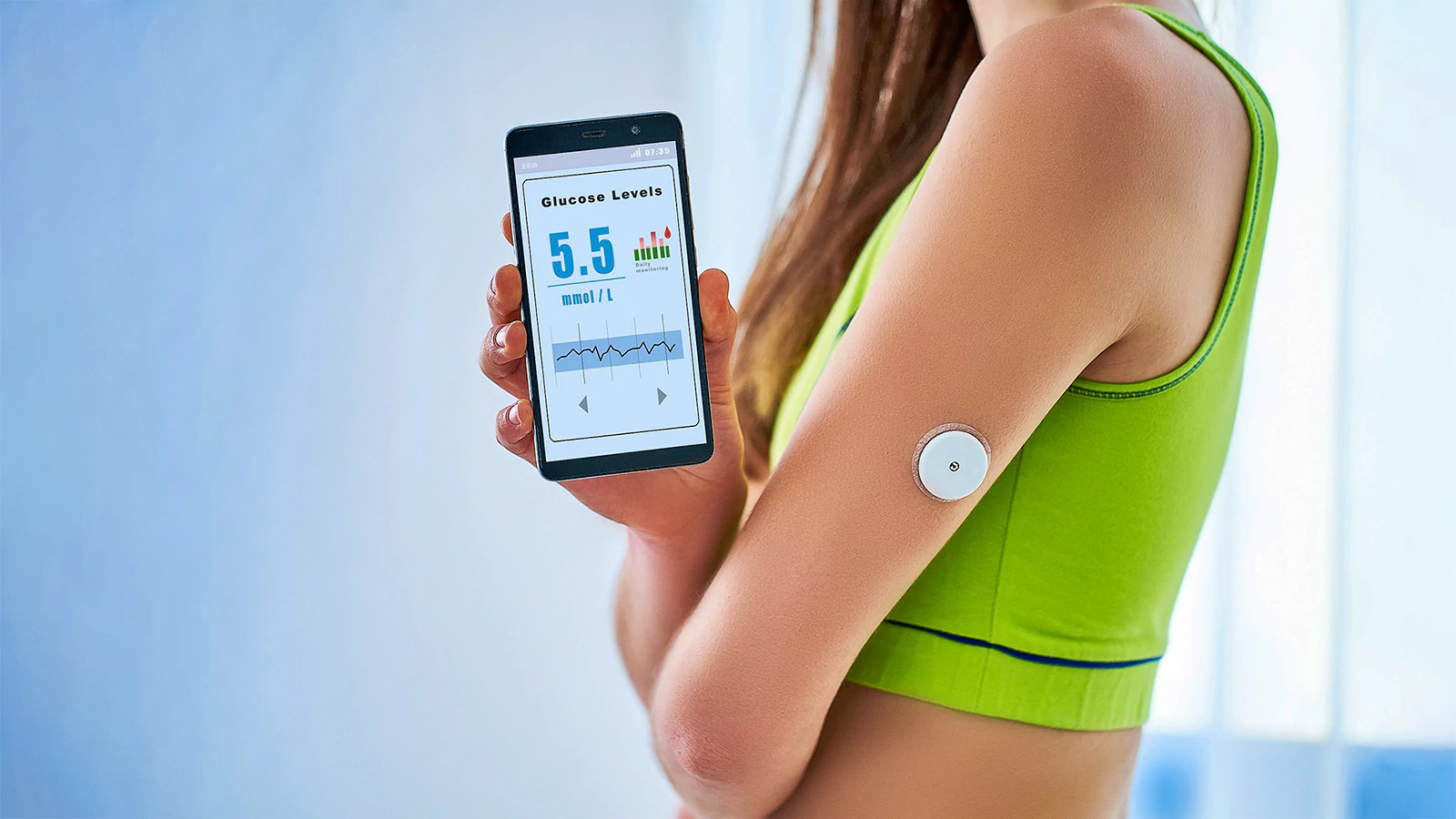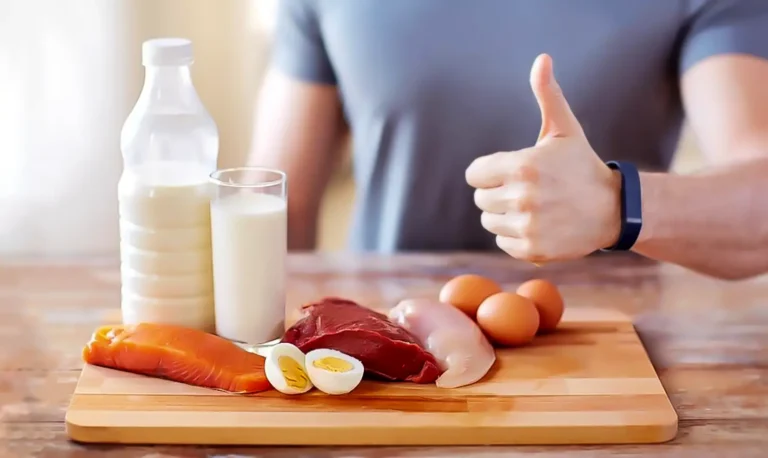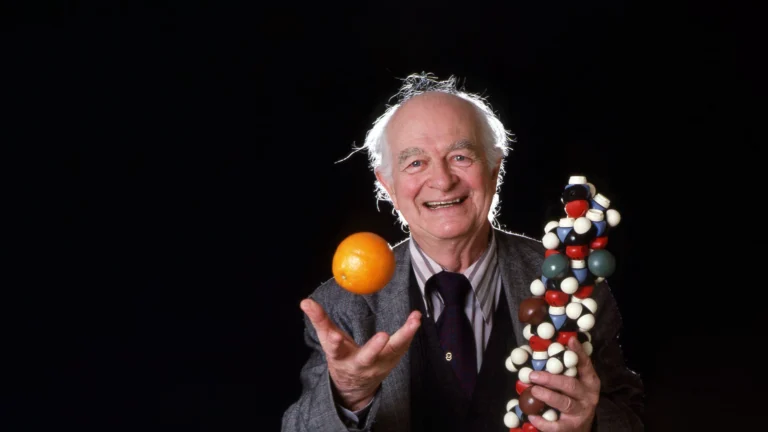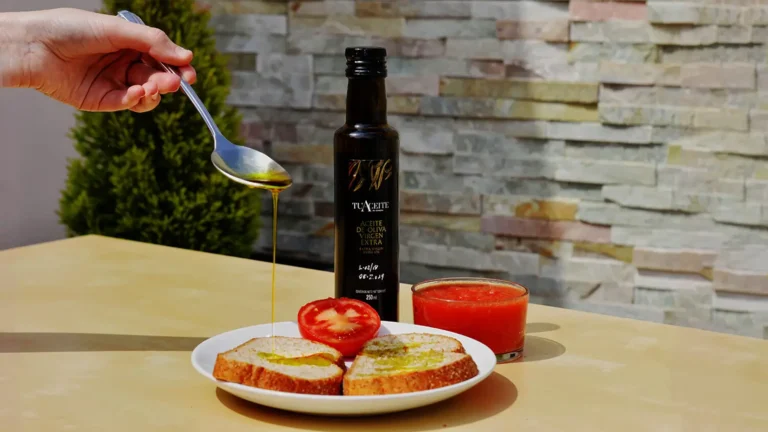Diabetes causes and refined carbohydrates- The vegan argument
People believe that refined carbohydrates are associated with insulin spikes and are one of the diabetes causes. They are right. However, they are also wrong.
Milos Pokimica
Written By: Milos Pokimica
Medically Reviewed by: Dr. Xiùying Wáng, M.D.
Updated June 9, 2023Most people have a belief that refined carbs like white rice are terrible and that refined carbohydrates are associated with insulin spikes and are one of the diabetes causes. They are right.
However, they are wrong at the same time. We will have to look at the entire picture of refined carbohydrates and diabetes.
When rice or grain is refined, the bran is removed. Consumers like nice and soft bread or rice without fiber that can stick between our teeth and taste bad. However, because fiber slows down digestion and absorbs water the carbs in rice without it gets absorbed more rapidly and create an unnatural insulin spike causing an unnatural reaction in our body which by compensation adapts by downregulation of insulin receptors. That is causing insulin resistance and is one of many factors that people with diabetes have to cut out of their diet.
Another factor is intercellular fat which blocks insulin receptor signaling. So refined carbs and sugars cause fast digestion of large and unnatural quantities of calories. Because we have absorption of sugar at a fast rate, we do not burn all of the calories because there are too many in the bloodstream, and some will end up stored as fat. What is worse, as soon as digestion is over, and all the sugars are out of the blood we will start to feel hungry again. Thus lack of fiber is correlated with constant binge eating which then causes obesity and insulin receptors downregulation. Then obesity independently causes all the bad stuff I already wrote about before, and the loop is finished. One small intervention like I do not like sticking bran in my teeth can cause a cascade of effects. A big chunk of the medical community finds that carbs are the cause of all evil and all diseases that we have today. This is the basis of reasoning for diets like the Paleo and Atkins diet. There is no bad logic here. So far.
The industry can sell protein powders and supplements and all the meat they can, especially if the meat is lean. Good old chicken breast and maybe some with healthy fats like tuna. Many people with diabetes that start to adopt this kind of diet may worsen their condition. For example, the modern diabetes epidemic in China and Japan has been linked to white rice consumption which is another half-truth. Consequently, that is why The China Study irritates people.
Rice currently feeds almost half of the world population but how can we settle much lower diabetes rates than just a few decades ago when they ate even more rice? In this study for example (Hu et al., 2012) higher consumption of white rice was correlated with a significantly heightened chance of type 2 diabetes, particularly in Asian (Chinese and Japanese) populations. Also, this is not a small study, with 352,384 participants with follow-up periods ranging from 4 to 22 years. If we analyze this statistically by total population numbers, the dose-response meta-analysis showed that for every meal per day addition of white rice intake, the relative risk of type 2 diabetes was 1.11 meaning an 11% increase in risk. Today China has the same diabetes rate of around 10% as the US which has around 11% despite the seven times less obesity. White rice does not appear to be correlated with obesity and heart attacks and strokes, just diabetes.
However, again if we look at The China Study rural plant-based diets centered around rice were associated with a low risk of diabetes and cancer, and heart disease. This 10% of diabetes prevalence just happened. In the year 2000, China had one of the lowest diabetes rates in the world. This is a dramatic shift that happened in just 20 years.
So what happened?
Well, the same thing happens in every country when the standard of living goes up. Meat consumption went up by an astonishing 40 percent, and rice consumption went down by 30 percent. And now we have a problem. If meat consumption goes up, rice consumption goes down, and diabetes risk goes up, and at the same time, rice consumption independently is correlated with diabetes risk, what is going on? Is it just rice?
Should we eat a more paleo type of diet and cut all the rice? That is what they tell us. Refined carbohydrates are correlated with diabetes and obesity. The answer is simple. What happens is that animal protein is making the rice much worse. This is one study you should go and read (Gulliford et al., 1989). The date of publication was Oct 1989.
Real “new” medical breakthrough. Six noninsulin-dependent diabetic subjects had received meals containing 25 g carbohydrates either as potato or as spaghetti. That is the same meal as white rice. Pure white flour pasta and starch-rich low fiber potato. Then insulin response was measured, and the meals were duplicated including the bonus of 25 g of protein and another one including 25 g of fat. The level of sugar in the blood and insulin responses were measured for 4h after the test meal. The addition of protein increased insulin responses dramatically. This is a “cutting-edge” science to give someone sugar and protein and measure the insulin response.
So there it is. The answer. It is the holy grail of nutrition.
The Protein.
If we look at the chart, we would see that the addition of protein makes potatoes exactly two times worse. From 150 to 300.
We can do it with sugar water too. From 50 to 100. The more meat we add, the worse it gets. When we get to 50 g of protein, we will elicit a surge of insulin that is seriously unnatural and disease-causing. Animal protein significantly potentiates insulin secretion triggered by carbohydrate ingestion. And all along we had been told that diabetes causes are white rice and white flour and sugar. And that is correct partially. The real truth is more complicated. Diabetes causes prime factor is maladaptation to our new diet.
Fiber will lower insulin response like whole wheat pasta but not at the level of 100 percent. Adding meat to any starch is problematic. This combination is unnatural. It is much worse, almost two times worse for insulin response to eat roasted chicken breast with whole wheat bread than the same portion of regular white flour-like Pomodoro pasta with or without oil.
Think about it this way. Does any other animal have regular lunch that consists of different food items?
Carnivores eat only meat. Plant eaters eat only plants. What about omnivores? Do we think that bear is going to catch a fish and then don’t eat it for some period until there is lunchtime so that he can bring that fish to the beehive in order to have dessert afterward?
Even combining different food items at the same meal is 100% unnatural and a modern human invention. And this surge of insulin is maladaptation.
I would ask this. Can we eat just meat without bread? Would we enjoy greasy sausages just by themselves? Would we enjoy just meat from burgers without the buns? It is a mixture of fat and carbohydrates (sugar) that abnormally triggers dopamine signaling in our brains and many other things like in this case abnormal insulin reaction. Combining this with low fiber intake is a recipe for disaster. Combining different food items is not a natural form of eating, but it is pleasurable so we will have to deal with it in the best way we can.
Type 2 diabetes is treatable to some extent. It is actually pretty simple. If we count out the exercise and losing weight number one would be no animal protein. Number two would be fiber. Meaning a lot of it in every meal. If you have to eat meat and have no other choice, then go ahead and eat meat. Just meat. No bread, rice, or any sugar with it. Sugar means regular sugar or fructose or carbs in any form. No salads no nothing. Maybe some cheese. No milk. Milk has sugar or lactose in it.
If you have to eat a combination of sugars and proteins, then it would be a good idea to add some psyllium husk or regular wheat bran and eat spoons of it after a meal. That will slow down digestion to some degree. Psyllium husk has no calories; it is 100 percent fiber. We can use it for diets if we want to bulk up meals in the stomach to give us more saturation but it tastes like cardboard that is liquid.
Number three would be resistant starch meaning beans. If we eat sausages with lots of bread and lots of alcohol we are probably done deal if we have diabetes in the family. When we see the numbers that 1 in 10 people have diabetes, it is an understatement. The actual number is 1 in 3 people in developed countries; just they might not know it because they do not have visible symptoms and insulin resistance is in the range that is known as pre-diabetes. Pre-diabetes is a disease just by itself and would also cause in the long run some adverse effects. It escalates to full-blown diabetes in 1 in 10 cases. CDC estimates that these numbers will still grow primarily on a global scale as the industrialization of the undeveloped regions of the world is taking place. If you have pre-diabetes, the long-term damage, especially to your heart, blood vessels, and kidneys, may already be starting.
References:
- Hu, E. A., Pan, A., Malik, V., & Sun, Q. (2012). White rice consumption and risk of type 2 diabetes: meta-analysis and systematic review. BMJ (Clinical research ed.), 344, e1454. https://doi.org/10.1136/bmj.e1454
- Gulliford, M. C., Bicknell, E. J., & Scarpello, J. H. (1989). Differential effect of protein and fat ingestion on blood glucose responses to high- and low-glycemic-index carbohydrates in noninsulin-dependent diabetic subjects. The American journal of clinical nutrition, 50(4), 773–777. https://doi.org/10.1093/ajcn/50.4.773
Related Posts
Do you have any questions about nutrition and health?
I would love to hear from you and answer them in my next post. I appreciate your input and opinion and I look forward to hearing from you soon. I also invite you to follow us on Facebook, Instagram, and Pinterest for more diet, nutrition, and health content. You can leave a comment there and connect with other health enthusiasts, share your tips and experiences, and get support and encouragement from our team and community.
I hope that this post was informative and enjoyable for you and that you are prepared to apply the insights you learned. If you found this post helpful, please share it with your friends and family who might also benefit from it. You never know who might need some guidance and support on their health journey.
– You Might Also Like –

Learn About Nutrition
Milos Pokimica is a doctor of natural medicine, clinical nutritionist, medical health and nutrition writer, and nutritional science advisor. Author of the book series Go Vegan? Review of Science, he also operates the natural health website GoVeganWay.com
Medical Disclaimer
GoVeganWay.com brings you reviews of the latest nutrition and health-related research. The information provided represents the personal opinion of the author and is not intended nor implied to be a substitute for professional medical advice, diagnosis, or treatment. The information provided is for informational purposes only and is not intended to serve as a substitute for the consultation, diagnosis, and/or medical treatment of a qualified physician or healthcare provider.NEVER DISREGARD PROFESSIONAL MEDICAL ADVICE OR DELAY SEEKING MEDICAL TREATMENT BECAUSE OF SOMETHING YOU HAVE READ ON OR ACCESSED THROUGH GoVeganWay.com
NEVER APPLY ANY LIFESTYLE CHANGES OR ANY CHANGES AT ALL AS A CONSEQUENCE OF SOMETHING YOU HAVE READ IN GoVeganWay.com BEFORE CONSULTING LICENCED MEDICAL PRACTITIONER.
In the event of a medical emergency, call a doctor or 911 immediately. GoVeganWay.com does not recommend or endorse any specific groups, organizations, tests, physicians, products, procedures, opinions, or other information that may be mentioned inside.
Editor Picks –
Milos Pokimica is a health and nutrition writer and nutritional science advisor. Author of the book series Go Vegan? Review of Science, he also operates the natural health website GoVeganWay.com
Latest Articles –
Top Health News — ScienceDaily
- MIT scientists strip cancer of its sugar shieldon December 23, 2025
Scientists at MIT and Stanford have unveiled a promising new way to help the immune system recognize and attack cancer cells more effectively. Their strategy targets a hidden “off switch” that tumors use to stay invisible to immune defenses—special sugar molecules on the cancer cell surface that suppress immune activity. Early tests show it can supercharge immune responses and outperform current antibody therapies.
- Scientists find a weak spot in deadly fungus that shut down hospital intensive care unitson December 23, 2025
A deadly hospital fungus that resists nearly every antifungal drug may have an unexpected weakness. Researchers discovered that Candida auris activates specific genes during infection to hunt for nutrients it needs to survive. This insight came from a new living-host model that allowed scientists to watch the fungus in action. The findings could eventually lead to new treatments or allow current drugs to be repurposed.
- This ultra-sensitive imaging system can spot cancer earlieron December 23, 2025
A new imaging technology can distinguish cancerous tissue from healthy cells by detecting ultra-weak light signals. It relies on nanoparticles that bind to tumor markers, making cancerous areas easier to identify. The system is far more sensitive than existing tools and could speed up cancer screening. Scientists believe it may help detect tumors earlier and reduce delays in diagnosis.
- Hidden brain maps that make empathy feel physicalon December 23, 2025
When we watch someone move, get injured, or express emotion, our brain doesn’t just see it—it partially feels it. Researchers found eight body-like maps in the visual cortex that organize what we see in the same way the brain organizes touch. These maps help us instantly understand actions, emotions, and intentions in others. The discovery sheds light on human empathy and opens doors for new brain-based therapies and AI systems that better understand the body.
- Are they really listening? Watch their blinkson December 23, 2025
Your eyes may reveal when your brain is working overtime. Researchers found that people blink less when trying to understand speech in noisy environments, especially during the most important moments. The effect stayed the same in bright or dark rooms, showing it’s driven by mental effort, not light. Blinking, it turns out, is a quiet marker of focused listening.
- This cancer-fighting molecule took 50 years to buildon December 22, 2025
MIT scientists have achieved the first-ever lab synthesis of verticillin A, a complex fungal compound discovered in 1970. Its delicate structure stalled chemists for decades, despite differing from related molecules by only two atoms. With the synthesis finally complete, researchers created new variants that showed strong activity against a rare pediatric brain cancer. The breakthrough could unlock an entire class of previously unreachable cancer-fighting molecules.
- A new drug could stop Alzheimer’s before memory loss beginson December 22, 2025
New research suggests Alzheimer’s may start far earlier than previously thought, driven by a hidden toxic protein in the brain. Scientists found that an experimental drug, NU-9, blocks this early damage in mice and reduces inflammation linked to disease progression. The treatment was given before symptoms appeared, targeting the disease at its earliest stage. Researchers say this approach could reshape how Alzheimer’s is prevented and treated.
PubMed, #vegan-diet –
- Comparing diet-related attitudes, perceptions, and behaviors of vegan and omnivorous adults: results from a cross-sectional survey study in Germanyon December 22, 2025
CONCLUSION: The findings are consistent with and build on existing research on cognitive and behavioral patterns related to a vegan diet, while at the same time yielding some additional insights. In particular, the results on significant differences in the risk-benefit perception of a vegan diet, as well as on motivations and influences regarding the decision to follow a vegan diet provide an important basis for the development of public health interventions and a foundation for further […]
- Assessment of vitamin A, vitamin B2, vitamin B12, vitamin K, folate, and choline status following 4 months of multinutrient supplementation in healthy vegans: a randomised,…on December 19, 2025
CONCLUSION: A multinutrient supplement containing 82 µg of vitamin B(12) per day significantly positively affected vitamin B(12) blood biomarkers in healthy vegans.
- Exploring the synergistic potential of pH and ultrasonication on the functional properties of pea and lentil protein isolates and its formulation in food producton December 15, 2025
The substitution of meat proteins with plant-based proteins from various sources is often motivated by nutritional considerations. However, the inherent limited solubility of plant proteins, which results in suboptimal techno-functional properties, remains a persistent challenge in food formulation. The purpose of this study was to utilize unique properties of pea (Pisum sativum L.) and lentil (Lens culinaris) through ultrasonication and pH variation in order to develop a stable and […]
- Healthful and Unhealthful Plant-Based Diets and Their Association with Cardiometabolic Targets in Women Diagnosed with Breast Cancer: A Cross-Sectional Analysis of a Lifestyle Trialon December 11, 2025
CONCLUSIONS: Maintaining cardiometabolic risk factors within normal ranges is clinically relevant in BCS, and this may be more likely when a plant-based diet is consumed, especially if low in unhealthy plant foods.
- Functional and Nutritional Properties of Lion’s Mane Mushrooms in Oat-Based Desserts for Dysphagia and Healthy Ageingon December 11, 2025
Hericium erinaceus (Lion’s Mane mushroom) is a medicinal species recognised for its neuroprotective and antioxidant properties. This study investigated its potential as a functional ingredient in oat milk-based desserts formulated for individuals with dysphagia. Freeze-dried Lion’s Mane powder (LMP), containing high-quality protein (~16%, amino acid score 88%), dietary fibre (~31%), and phenolic compounds (72.15 mg GAE/g), was incorporated at varying levels using gelatin or iota-carrageenan […]
Random Posts –
Featured Posts –
Latest from PubMed, #plant-based diet –
- Patient-Reported Observance of a Mediterranean Diet and Physical Activity in Patients Living with Breast Cancer: Implications for Primary Care Providersby Lydia Hesseltine on December 23, 2025
CONCLUSION: The majority of patients living with breast cancer did not meet the minimal national recommendations. These findings underscore the need for further research to develop strategies to optimize nutrition and physical activity within oncology and primary care settings.
- Associations Between Healthy and Plant-Based Dietary Patterns and Cognitive Reserve: A Cross-Sectional Analysis of the 1946 British Birth Cohortby Kelly C Cara on December 23, 2025
CONCLUSIONS: CR was positively associated with healthy dietary patterns and inversely associated with unhealthful plant-based dietary patterns. Diet uniquely explained variations in CR and should be considered among influential lifestyle factors in future research. Longitudinal analyses are needed to confirm these findings.
- Developing Topicsby Changzheng Yuan on December 23, 2025
CONCLUSION: A 26-week MIND diet intervention improved diet quality and cognitive function in mild stroke patients. These findings support the feasibility and potential benefit of dietary strategies for cognitive health in stroke survivors and provide preliminary evidence supporting the need for future large-scale trials.
- Dietary Hydrilla verticillata extract enhances growth and immune defense against Aeromonas hydrophila in Labeo rohitaby Faiza Khanam on December 23, 2025
This study investigated the effects of dietary Hydrilla verticillata extract (HVE) on growth performance, physiological responses, and disease resistance in Labeo rohita fingerlings subjected to Aeromonas hydrophila challenge. Following acclimatization, the fish were divided into 15 tanks at random (30 fish per tank) and given five different diets that contained 0, 75, 150, 300, or 600 mg/kg HVE for 60 days. Growth was significantly (P
- Public Healthby Diandra N Denier-Fields on December 23, 2025
CONCLUSION: MIND diet-associated plasma metabolite groups correlate with plasma biomarkers of AD and neurodegeneration. These groups of metabolites include essential amino acids, omega-3 fatty acids, plant and gut microbe-derived metabolites, and sphingolipids. These findings highlight the potential importance of dietary interventions in modulating metabolic pathways linked to dementia biomarkers.
- Public Healthby Samantha Ramachandra on December 23, 2025
CONCLUSION: In conclusion, the review emphasizes the importance of personalized dietary strategies tailored to an individual’s gut microbiota composition as a promising approach for preserving cognitive health and preventing neurodegenerative diseases, warranting further research in this area.

